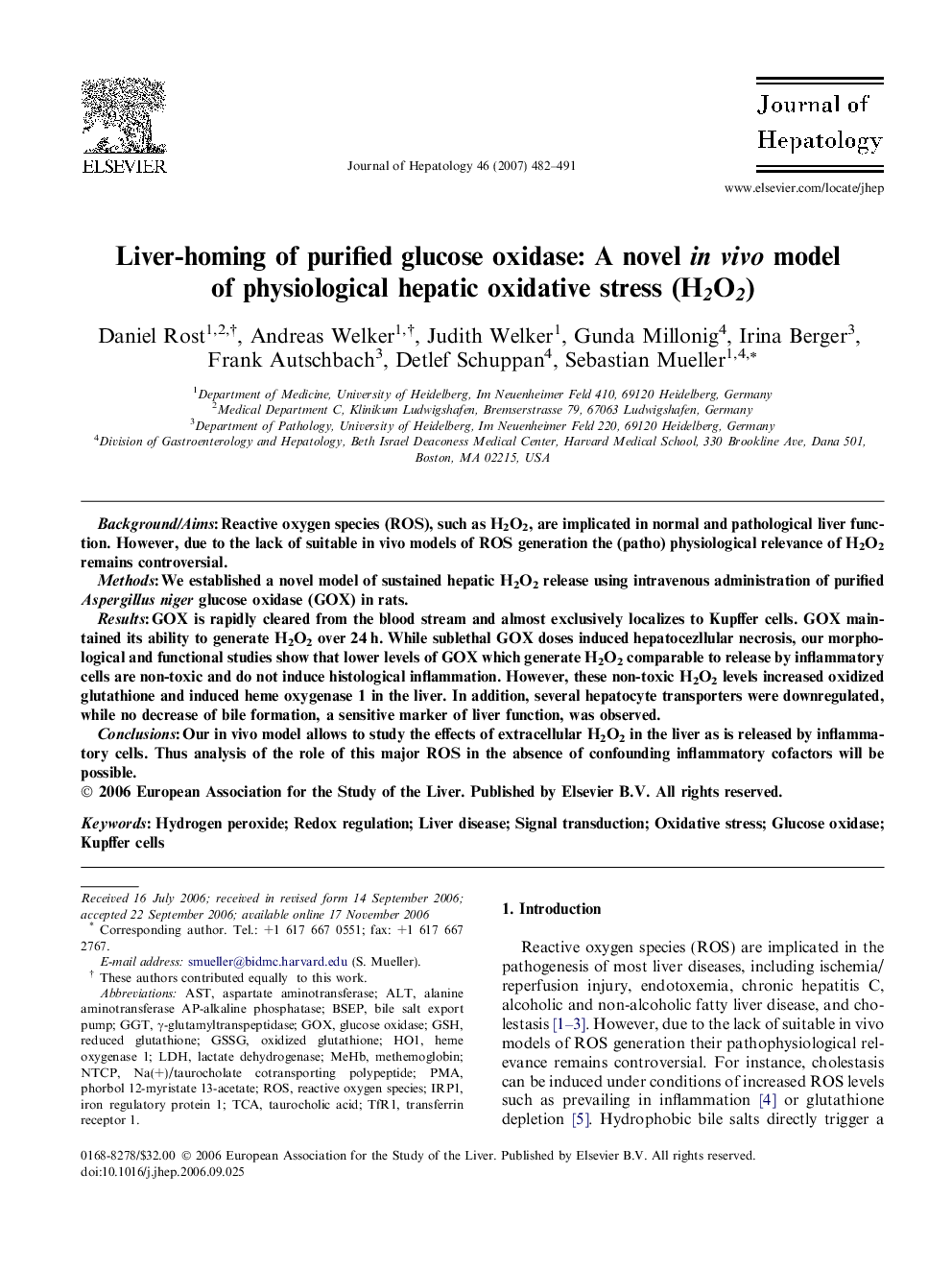| Article ID | Journal | Published Year | Pages | File Type |
|---|---|---|---|---|
| 3314769 | Journal of Hepatology | 2007 | 10 Pages |
Background/AimsReactive oxygen species (ROS), such as H2O2, are implicated in normal and pathological liver function. However, due to the lack of suitable in vivo models of ROS generation the (patho) physiological relevance of H2O2 remains controversial.MethodsWe established a novel model of sustained hepatic H2O2 release using intravenous administration of purified Aspergillus niger glucose oxidase (GOX) in rats.ResultsGOX is rapidly cleared from the blood stream and almost exclusively localizes to Kupffer cells. GOX maintained its ability to generate H2O2 over 24 h. While sublethal GOX doses induced hepatocellular necrosis, our morphological and functional studies show that lower levels of GOX which generate H2O2 comparable to release by inflammatory cells are non-toxic and do not induce histological inflammation. However, these non-toxic H2O2 levels increased oxidized glutathione and induced heme oxygenase 1 in the liver. In addition, several hepatocyte transporters were downregulated, while no decrease of bile formation, a sensitive marker of liver function, was observed.ConclusionsOur in vivo model allows to study the effects of extracellular H2O2 in the liver as is released by inflammatory cells. Thus analysis of the role of this major ROS in the absence of confounding inflammatory cofactors will be possible.
